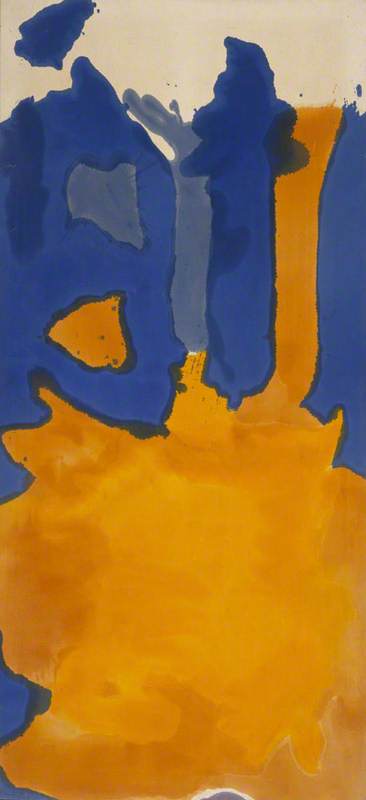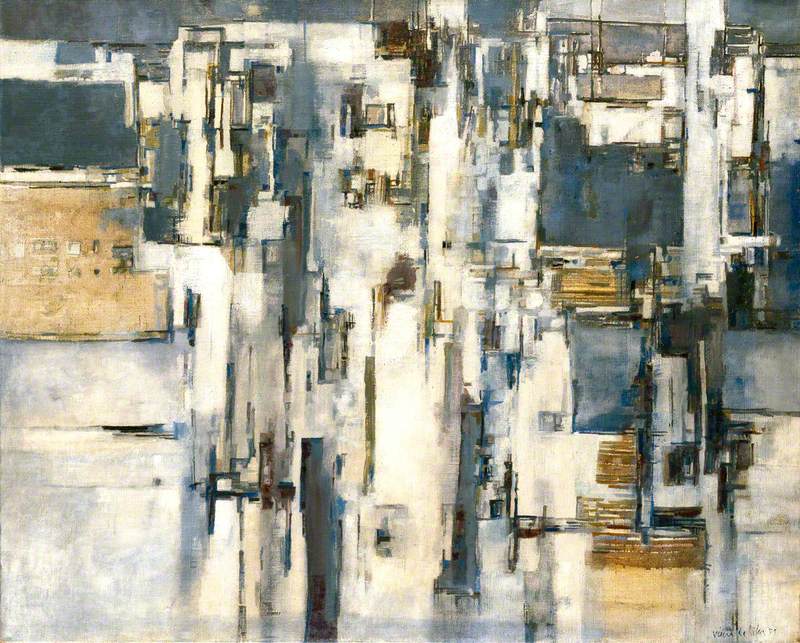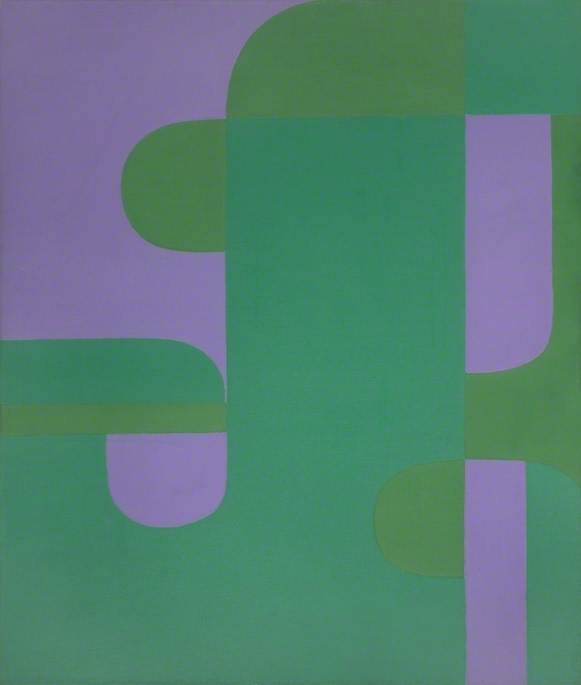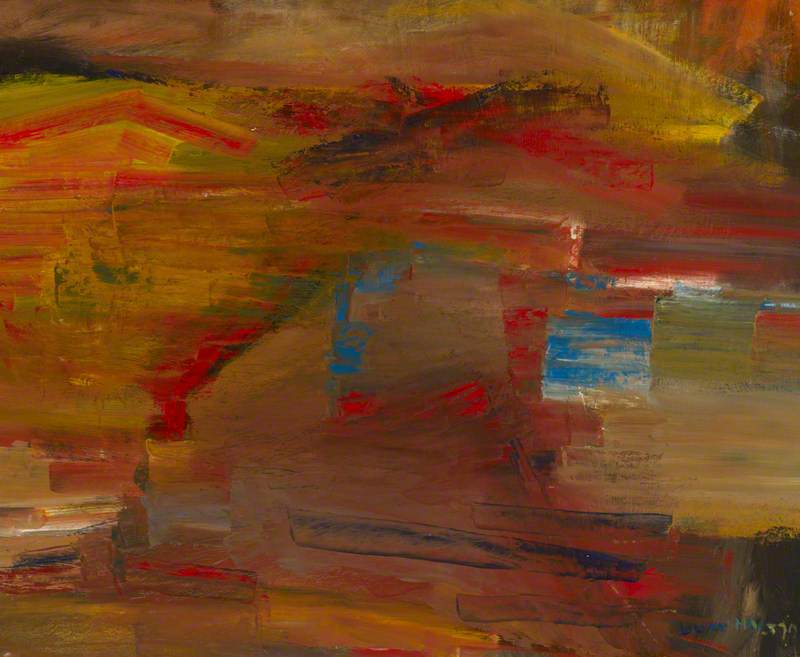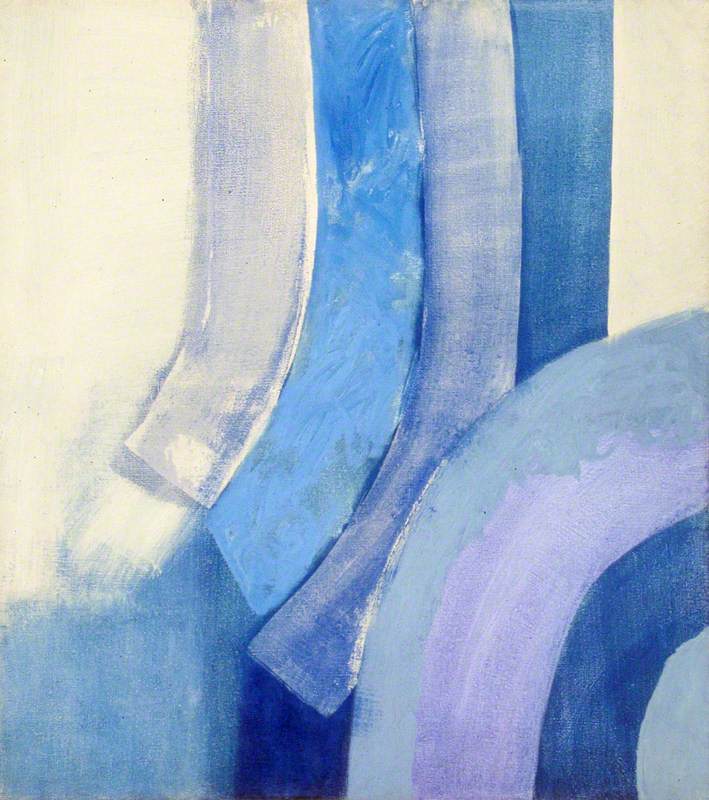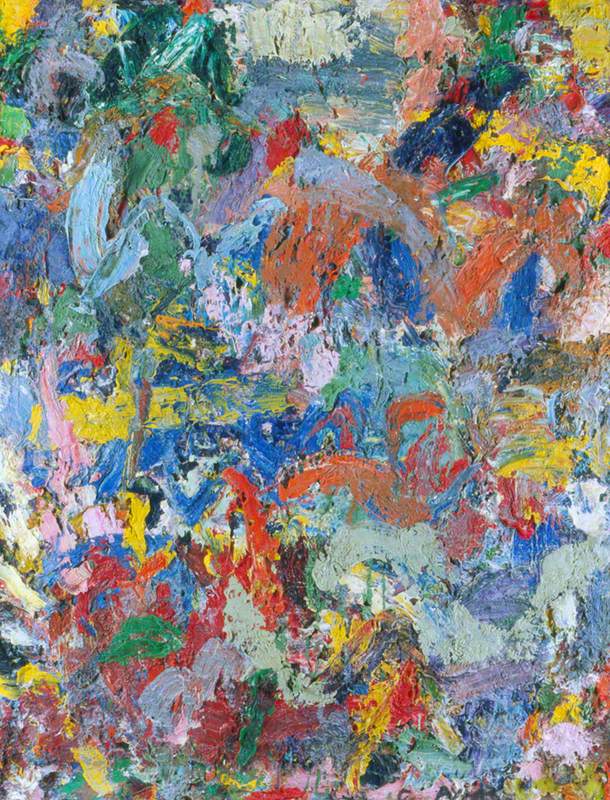The Abstract Expressionist movement of the second half of the twentieth century is often seen as the art of white, male Americans. Its scale, colour and dynamism was a sign of Cold War machismo; women and global practitioners were marginalised and belittled. In recent years, artists like Lee Krasner and Helen Frankenthaler have finally achieved the recognition they deserve and now an exhibition at the Whitechapel Gallery, 'Action Gesture Paint', is bringing together the work of over eighty artists from around the world. If you can't get to London, here are some of examples of the exhibitors' work which show the diversity of women abstractionists in UK collections.
-
Lee Krasner 'Gothic Landscape' (1961)
Gothic Landscape 1961Lee Krasner's (1908-84) career was overshadowed by her marriage to Jackson Pollock, yet in many ways she is the more varied and interesting artist. She trained in a traditional figurative style, before discovering European Modernism when MoMA opened in 1929. She was part of the Federal Art Project during the 1930s. She worked in collage, in monochrome; she used cubist slabs, hieroglyphs and calligraphy, mosaics, and for a brief period in the 1970s hard-edged forms. She was also a harsh critic of her own work, frequently revising and destroying what she had produced, and going through periods of introspection. Gothic Landscape partly painted at night after the death Krasner's mother uses tangled, almost angry brushstokes.
Lee Krasner (1908–1984)
Oil on canvas
H 176.8 x W 237.8 cm
Tate
-
Helen Frankenthaler, 'Saturn' (1963)
Saturn 1963Like many American women abstractionists, Helen Frankenthaler (1928-2011) was originally little more than a footnote in art history, as partner of influential critic, Clement Greenberg, and wife of artist Robert Motherwell. Yet she exhibited regularly from 1950 and was also responsible for developing the influential 'soak stain' technique, first seen in her breakthrough work Mountains and Sea (1952), in which diluted paint was applied to unprimed canvas and allowed to spread like an ink blot. From the early 1970s, she also worked in woodcuts, creating large, complex forms which nevertheless look organic and immediate. Saturn uses soak stain and like many of Frankenthaler's works, evokes natural landscape within its abstract form
Helen Frankenthaler (1928–2011)
Acrylic on canvas
H 264.2 x W 119.5 cm
National Galleries of Scotland
-
Joan Mitchell 'Painting' (1958)
Painting 1958Joan Mitchell (1925-92) was an American second generation Abstract Expressionist who lived in France for the second half of her career. She was one of the most successful women abstractionists, exhibiting regularly from the time of her first solo exhibition in New York in 1952, and achieving high prices on the art market. Working mainly in oil on canvas, and often on a large scale, sometimes employing multiple panels, Mitchell combines the broad gestural brushwork of de Kooning with an enthusiasm for European art. She once said she wished she could paint like Matisse, she ended her career living near Monet's garden at Giverny, and nature remained a primary inspiration to her.
Joan Mitchell (1925–1992)
Oil on canvas
H 101 x W 90.8 cm
National Museums NI
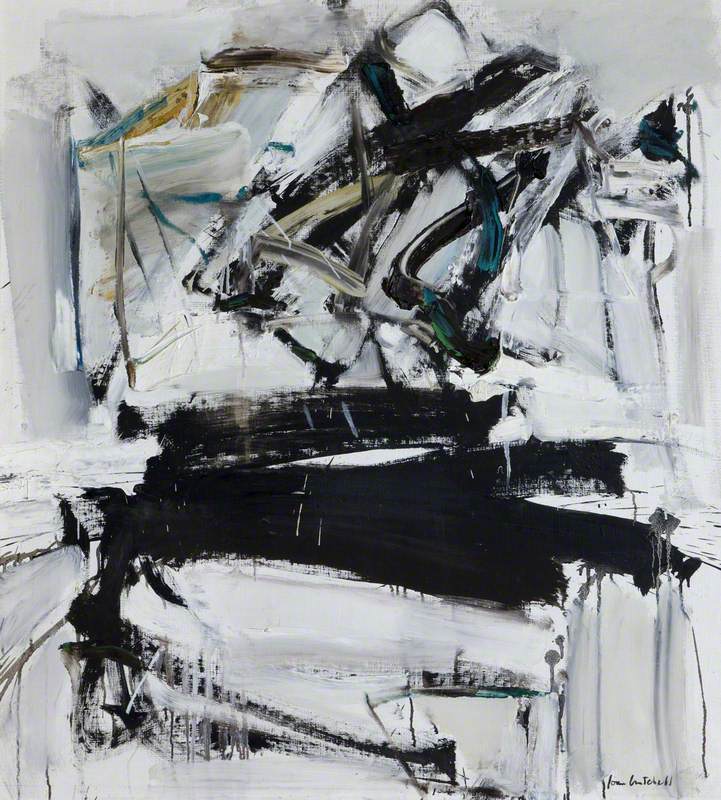 © estate of Joan Mitchell. Image credit: National Museums NI
© estate of Joan Mitchell. Image credit: National Museums NI
-
Judit Reigl, 'Guano'
Guano (Guano) 1958–62Judit Reigl (1923-2020) was a Hungarian-born artist, who fled to France in 1950. She began her career influenced by Surrealism, experimenting with automatic creation and collage, and producing fantastical landscapes. However, she moved towards gestural painting, working with an emphasis on her own physicality by using thickly applied paint which she than scraped, scratched and pushed across the canvas. Guano is one of a series which evolved by reworking old canvases which had been on the floor of her studio, the title suggesting the organic fertility of this 'waste' product. Reigl scraped away the encrusted paint layers creating texture and laminations on the canvas.
Judit Reigl (1923–2020)
Oil on canvas
H 152.9 x W 200 cm
Tate
-
Aiko Miyawaki, 'Untitled' (1970)
Untitled 1970Aiko Miyawaki (1929-2018) was a Japanese artist who lived in Europe and North America, initially producing paintings in bold bright colours which incorporated substances like powdered glass and stone to create uneven surfaces. From 1966, however, she turned towards three dimensional sculpture, using metallic and reflective materials, and bold, simple forms. Her most famous works - Utsurohi - which use long, partially fixed stainless steel cords, explore movement as well as reflectivity. This work, a brass cube punctured with slightly irregular square tubes plays with the perfection and shininess of the surface, as well as ideas of geometry, solid and void.
Aiko Miyawaki (1929–2014)
Brass
H 8 x W 8 x D 8 cm
Arts Council Collection, Southbank Centre
-
Yolanda Mohalyi, 'Painting No.7' (1960-5)
Painting No. 7 1960–1965Born in Hungary, Yolanda Mohalyi (1909-78) moved to Brazil to marry in 1931. She taught art and painted, initially using watercolours, then translucent oils, working figuratively in an expressionist style. She exploited a wide range of media including woodcuts and stained glass. In 1957, on her first trip back to Europe she had an epiphany, deciding to abandon representational painting for pure abstraction. On her return to Brazil, she became a pioneer of abstract painting in South America. Her canvases throughout the 1960s used large areas of overlapping colour and semi-geometric forms to create defiantly anti-representational works.
Yolanda Mohalyi (1909–1978)
Oil on canvas
H 154 x W 131 cm
Harris Museum, Art Gallery & Library
-
Maria Elena Vieira da Silva, 'Pervenche' (1959)
Pervenche 1959A Portuguese-born painter, Maria Elena Vieira da Silva (1908–1992) spent most of her career in France, having moved to Paris to study in 1928. Her early work, influenced by Cubism and Futurism, blended complex surface pattern with an exploration of depth. She spent the war years in Brazil, but returned to Europe in 1947, working with increasingly abstract forms which nevertheless seemed inspired by landscape and particularly cityscapes, and her canvases are often compared to mazes in their complexity. Most of her work retains a sense of geometric or linear structure and a limited palette, which both link back to her early interest in Cubism.
Maria Elena Vieira da Silva (1908–1992)
Oil on canvas
H 81 x W 100 cm
Royal Academy of Arts
-
Fanny Sanín, 'Acrylic No 1' (1989)
Acrylic No. 1, 1989 1989Born in Colombia, Fanny Sanín (b.1938) is now resident in New York. Initially working in a gestural style, she also experimented with printmaking, before establishing her signature geometric abstractions, using clearly defined blocks of colour and often employing symmetry. Painting slowly - she sometimes only completes one or two paintings a year - Sanin works with many preparatory sketches and hand mixed acrylic paints. She sees her works a meditations exploring form and colour, as well as her South American roots.
Fanny Sanín (b.1938)
Acrylic on canvas
H 106.7 x W 137.2 cm
Essex Collection of Art from Latin America
-
Margaret Mellis, 'Green and Violet' (1967)
Green and Violet 1967Margaret Mellis (1914-2009) was a Scottish artist, who trained at Edinburgh College of Art before moving to St Ives with her first husband, fellow painter, Adrian Stokes. There she began making reliefs in a Constructivist style, influenced by Naum Gabo. After the Second World War, she spent time in France before settling in Southwold where she started to use found objects, particularly driftwood, in her work. Her painting focused on the relationships between colours, building up layers of carefully applied paint, with an even texture which would not detract from the impact which the colours themselves had. She like colours to 'glow' and here juxtaposes violet and green to create an almost luminous effect.
Margaret Mellis (1914–2009)
Oil on cotton duck
H 152 x W 122 cm
Arts Council Collection, Southbank Centre
-
Lilian Holt, 'Topaz Gold' (1970)
Topaz Gold 1970Lilian Holt (1898-1983) is another artist who existed in the shadow of her husband, David Bomberg, whom she married after visiting him in Spain in 1929. Holt trained at Putney School of Art but her role in the Land Army and then her first marriage meant that she painted little. After marrying Bomberg, she became a founder member of the Borough Group which supported artists from Borough Polytechnic where her husband taught, and took part in their exhibitions, but it was not until after his death that her own career took priority. She travelled widely in Spain, Mexico and Iceland, producing abstract but landscape-inspired canvases of bold, swirling colour.
Lilian Holt (1898–1983)
Oil on canvas
H 63.9 x W 76.5 cm
Ben Uri Collection
-
Sandra Blow 'Abstract/Blue'
Abstract/BlueSandra Blow (1925-2006) was British painter, who trained at St Martins and spent time in Italy, before becoming a teacher herself at the Royal College of Art. In Italy she met Alberto Burro who was to become a major influence on her work. She was associated with the St Ives School, first staying there in 1957 and settling in the town in the
1990s. She experimented with various types of abstraction, including organic and more geometric forms, motivated by intellectual concerns like proportion and balance, and described herself as a 'academic' artist. Much of her works involved 'non-art' materials like liquid cement and sand, and she incorporated collage into her paintings, but always remained interested in colour.
Sandra Blow (1925–2006)
Oil on canvas
H 137.5 x W 123 cm
Government Art Collection
-
Gillian Ayres, 'Kintraw'
KintrawGillian Ayres (1930–2018) spent most of her career better known as a teacher, than an exhibiting artist. After studying at Camberwell, she held a number of posts, including at St Martins, before becoming the first female director of an art school at Winchester. She was an early enthusiast of American art but her abstract expressionist murals produced for a north London school in 1957 were wallpapered over almost immediately, and only rediscovered in 1983. This was the start of her most successful and productive period, working in isolation in North Wales. 'Kintraw' is relatively small, but Ayres often worked on a large scale, producing exuberantly coloured canvases of thick, expressive paint. Her evocative titles were applied later
Gillian Ayres (1930–2018)
Oil on board
H 97.5 x W 78.3 cm
Southampton City Art Gallery
-
Franciszka Themerson, 'People are Generally Kind' (1975)
People are generally kind 1975Franciszka Themerson (1907-1988) was born in Poland, and studied there, before moving first to Paris and then, from 1940, the UK. She was a successful practitioner in a range of fields, from children's illustrator to theatre designer, using photography, film, drawing and paint, often in collaboration with her husband, Stefan Themerson. Her work employs humour and surrealism, often to convey challenging or political messages. Early line drawings increasingly gave way to what she described as 'bi-abstractions' in which vague figures floated in colour. By the 1960s she was working with abstract organic line in her Calligramme series, but she always remained open to the possibilities of representation.
Franciszka Themerson (1907–1988)
Oil on canvas
H 87.7 x W 139 cm
Arts Council Collection, Southbank Centre
-
Wilhelmina Barns-Graham, 'Glacier Crystal, Grindelwald' (1950)
Glacier Crystal, Grindelwald 1950Finally, not part of the Whitechapel exhibition, Wilhelmina Barns-Graham (1912–2004) is currently having a retrospective at the Hatton Gallery in Newcastle. This prolife Scottish artist more than deserves inclusion, having been part of the British abstractionist scene ever since she moved to St Ives in 1940. A trip to Switzerland in 1948 led to a series of works inspired by glaciers, and her abstract canvases were always rooted in nature. Her work varies widely, as she adopted whatever means necessary - line, colour, geometry - to transfer her experience of landscape onto canvas. And she continued to innovate, producing some of her most vibrantly coloured works towards the end of her life.
Wilhelmina Barns-Graham (1912–2004)
Oil on canvas
H 51.4 x W 60.9 cm
Tate
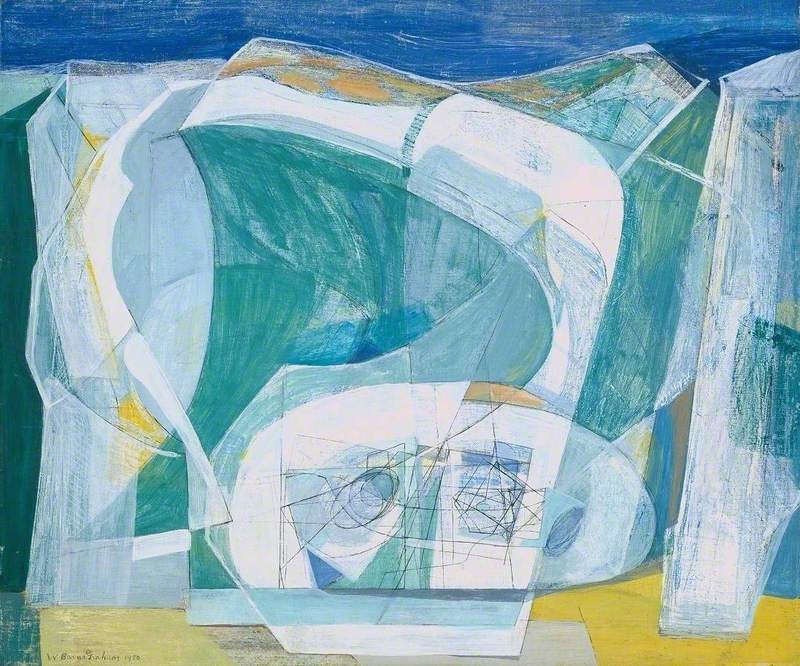 © Wilhelmina Barns-Graham Trust. Image credit: Tate
© Wilhelmina Barns-Graham Trust. Image credit: Tate
Explore artists in this Curation
View all 14-
 Aiko Miyawaki (1929–2014)
Aiko Miyawaki (1929–2014) -
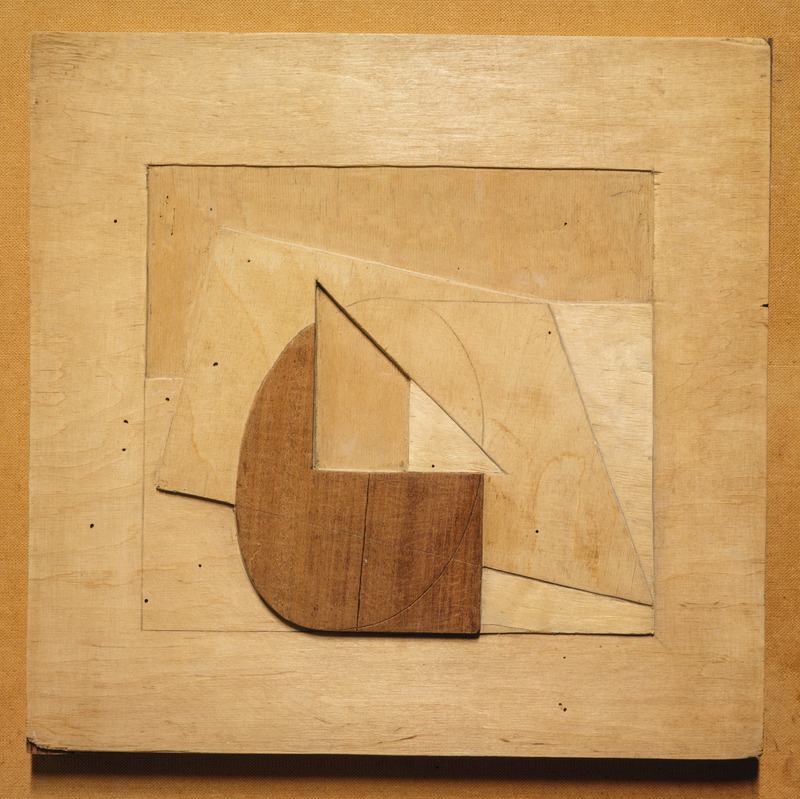 Margaret Mellis (1914–2009)
Margaret Mellis (1914–2009) -
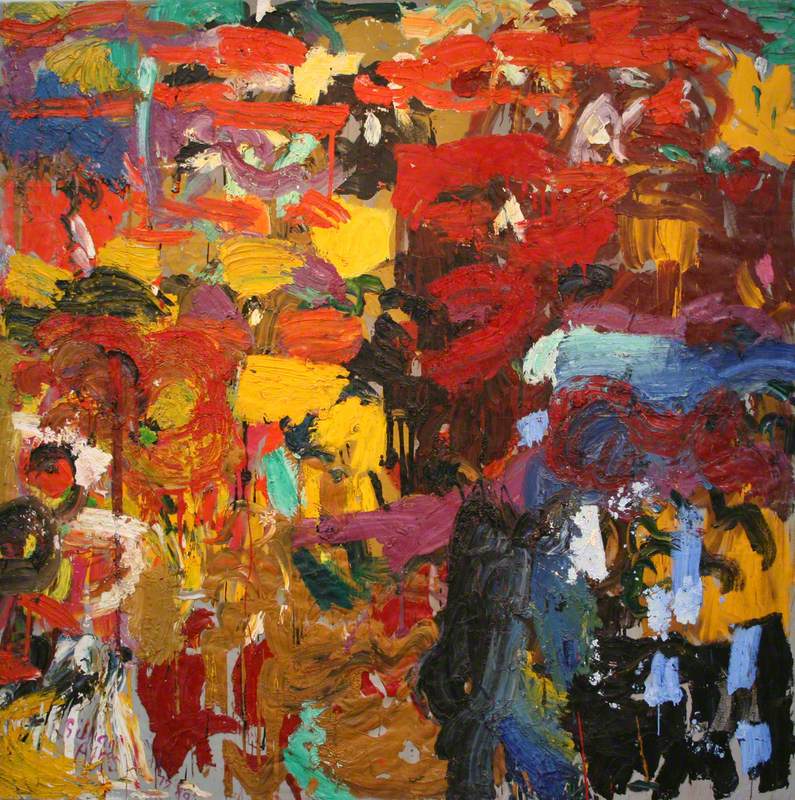 Gillian Ayres (1930–2018)
Gillian Ayres (1930–2018) -
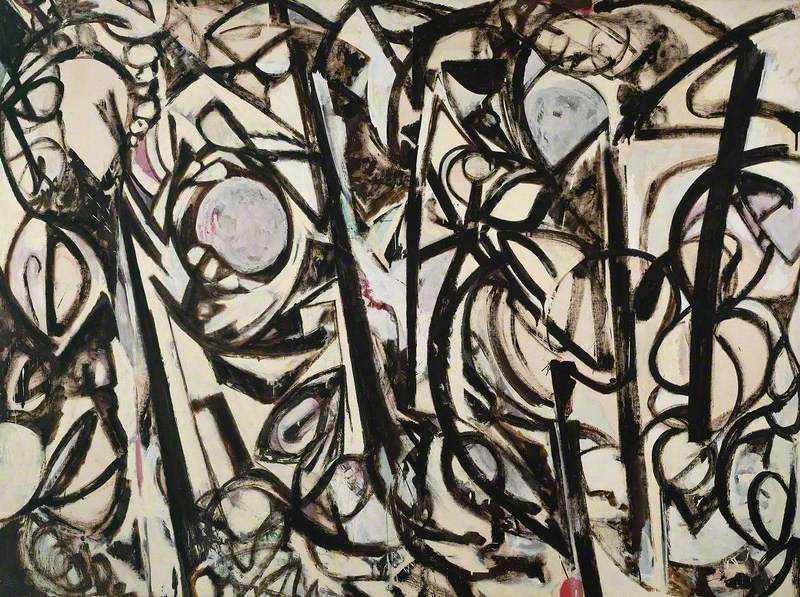 Lee Krasner (1908–1984)
Lee Krasner (1908–1984) -
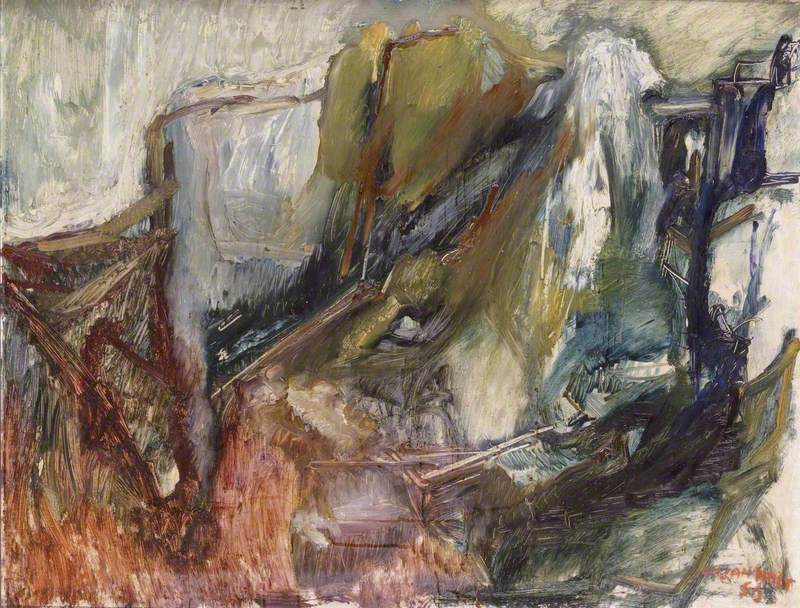 Lilian Holt (1898–1983)
Lilian Holt (1898–1983) -
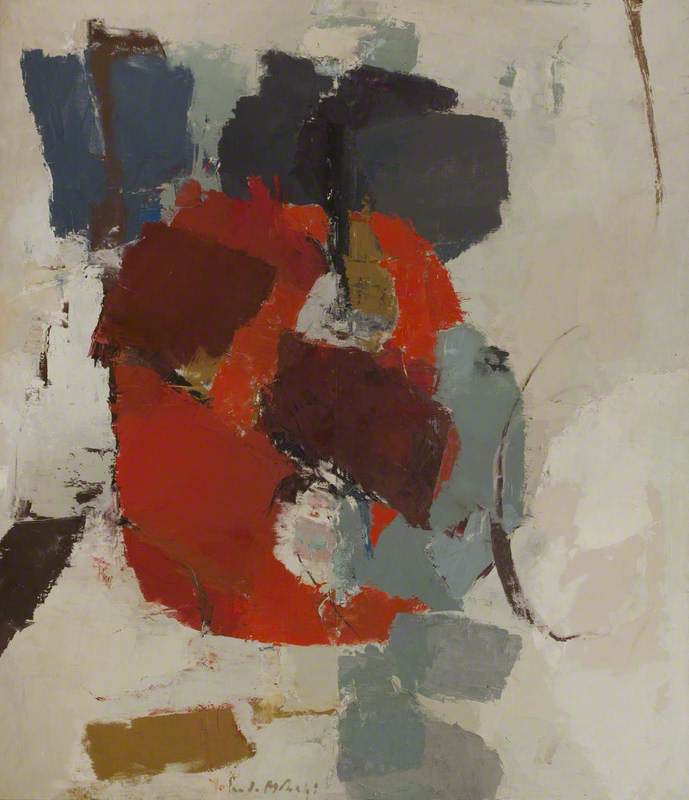 Yolanda Mohalyi (1909–1978)
Yolanda Mohalyi (1909–1978) -
 Judit Reigl (1923–2020)
Judit Reigl (1923–2020) -
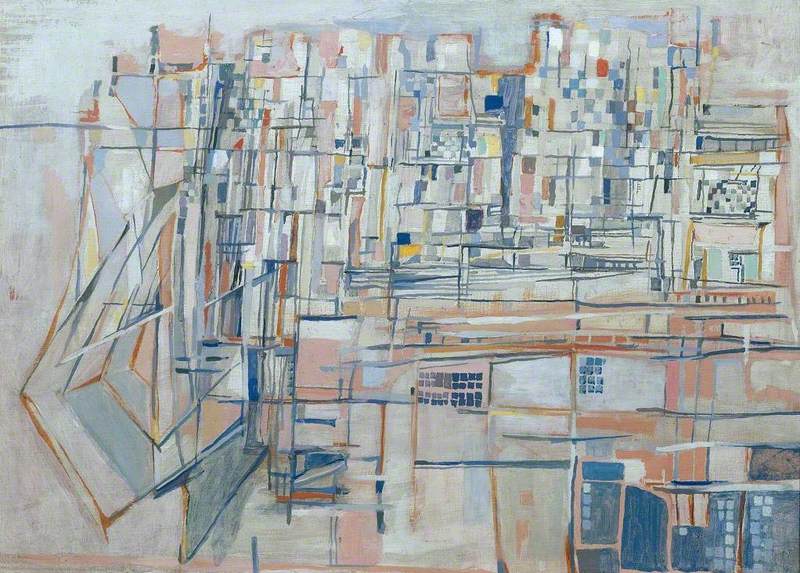 Maria Elena Vieira da Silva (1908–1992)
Maria Elena Vieira da Silva (1908–1992) -
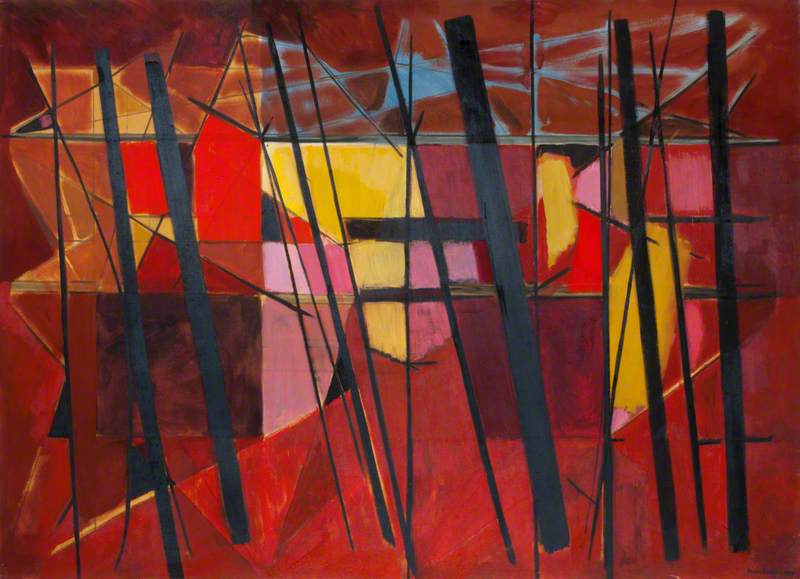 Wilhelmina Barns-Graham (1912–2004)
Wilhelmina Barns-Graham (1912–2004) -
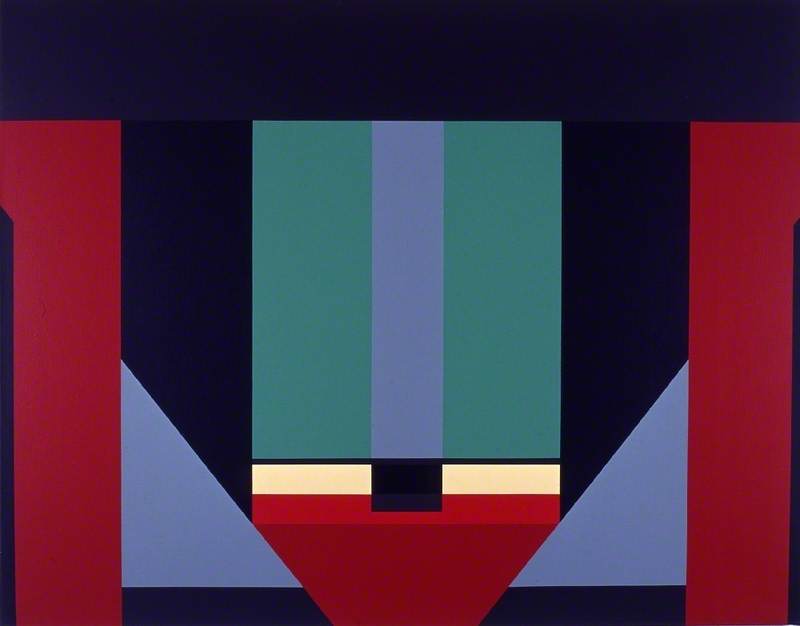 Fanny Sanín (b.1938)
Fanny Sanín (b.1938) - View all 14
